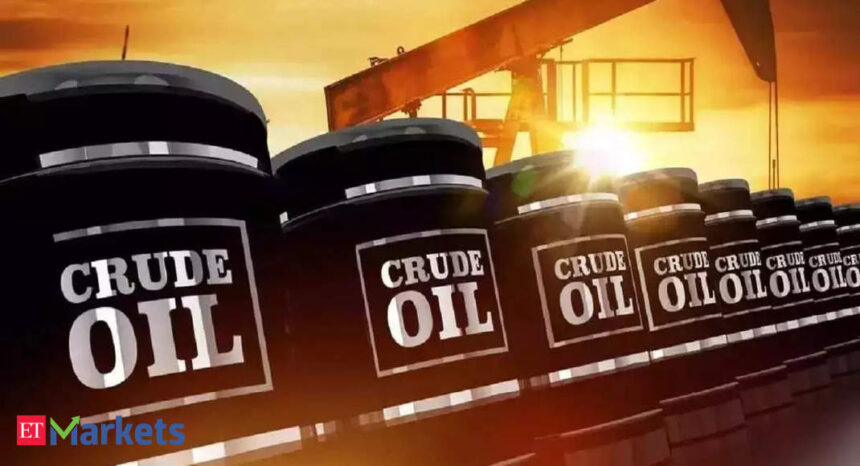In addition to the economy, companies in various sectors such as paints, tyres, oil, cement, and aviation also feel the direct pain of rising prices as crude is a key raw material for many of them. ET looks at the impact of rising crude prices on these sectors and stock prices:
Oil Marketing Cos (OMCs)
Analysts see profitability of oil refining and marketing companies getting squeezed on account of the firming crude oil prices.
“Since gross margins are lower in diesel and petrol, bleeding in OMCs is expected to continue,” said Swarnendu Bhushan, co-head of research at Prabhudas Liladher. “In OMCs, the refining margins are strong, but the marketing margins are lower. If the crude oil prices remain above $90 post the second quarter, then margin downgrades can occur.”
OMC shares will remain subdued, and the underperformance will continue. “ONGC, GAIL and Gujarat Gas are some stocks that can withstand the pressure from rising crude prices,” said Bhushan.

Paints
Paint companies are likely to witness earnings downgrades, given the industry’s heavy dependence on oil derivatives. “About 60-65% of the total raw material cost of paint can be attributed to crude oil derivatives,” said G Chokkalingam, founder, Equinomics Research. He said market leaders might be able to withstand the cost pressure, but the overall impact will be negative. The foray of Grasim Industries into the paints business could put further pressure on margins.”This industry will see a major impact also because its growth in the last couple of years has not been in double digits. The increase in raw material cost will pinch them.” he said.
Tyre
Since crude is a significant component in manufacturing of tyres, higher crude prices are expected to impact tyre stocks negatively. “Crude is used for producing synthetic rubber and carbon black, which collectively contribute to more than 30% of the total raw material costs of tyres,” said Ashwin Patil, senior research analyst at LKP Securities. He said that increasing operating leverage from demand for autos, particularly in PVs and two-wheelers may offset part of the margin pressure though.
Investors will, however, do better by remaining selective about shares of tyre makers in the wake of elevated crude prices. “Stocks like MRF, Apollo and CEAT, which are strong players in personal vehicles (PV) and two-wheelers in the listed space should get slight advantage over those who are strong in commercial vehicle (CV) and tractors space which are now in a slow lane and are expected to post lower growth this fiscal,” said Patil.
Aviation
The airline industry has been one of the most impacted among various sectors by rising oil prices. Aviation turbine fuel (ATFs) makes up for over 40% of airlines’ operating costs. Brokerage Emkay Global said OMCs have hike domestic ATF prices in September by 14% from last month. The firm said recovering yields on account of the upcoming holiday season could help partly offset fuel cost pressures. But, a weakening rupee could lead to forex losses for aviation companies in the September quarter. Chokkalingam said market leaders like IndiGo may be able to withstand the pressure better, though earnings will remain weak.
Cement
The cement industry is likely to not be affected directly because of increasing crude prices since coal and pet coke are the major fuel contributors. Pet coke is a by-product of the refinery process but not directly correlated to higher crude prices. However, concerns may arise if diesel prices are hiked. “Power and fuel and transportation make up about 65% of the cost of production for cement,” said Snehdeep Bohra, director, Fitch Ratings. He doesn’t expect a hike in diesel prices.
“Cement industry has witnessed a margin decline in FY23 due to high diesel prices because of the Russia-Ukraine war. If the rise in crude leads to a hike in diesel prices, then transportation costs will increase and impact margins.”








